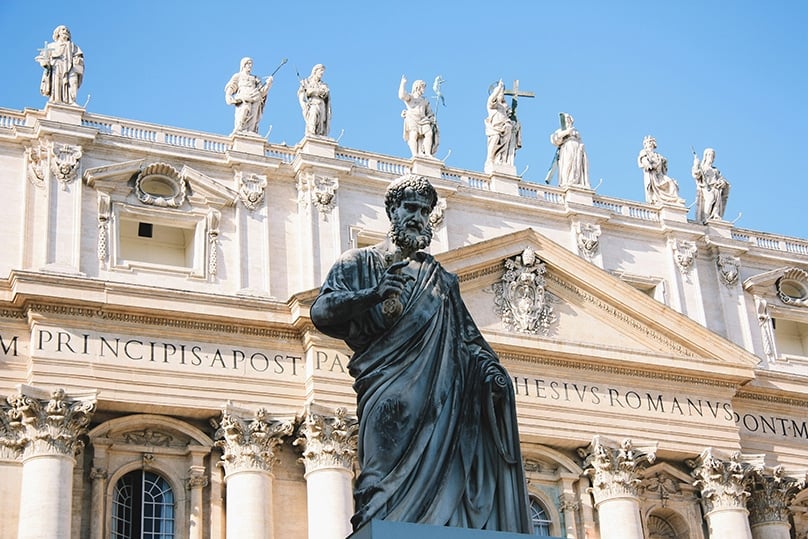
Dear Fr John Flader, You have written that the primacy of the Pope in the Church is clear in Scripture. Is there any evidence in the first centuries that the rest of the Church accepted this primacy?
There is abundant evidence of the acceptance of the primacy of the bishop of Rome, the Pope, over the universal Church. This is a very important question for understanding the universality and unity of the one Church of Jesus Christ under the leadership of the Pope. I will discuss some of the evidence in this column and more in the next.
When St Peter was martyred under Nero in the mid-sixties of the first century, the early Church understood that Peter’s ministry as head of the Church was to be continued. So Peter was replaced successively by Linus, Cletus (or Anacletus), Clement, and so on down to Pope Francis, who is the 264th Pope.
The unanimous Tradition of the Church holds that this succession of Peter’s primacy is found only in “the bishops of the holy Roman See, which he established and consecrated with his blood. Therefore, whoever succeeds Peter in this Chair holds Peter’s primacy over the whole Church according to the plan of Christ himself” (First Vatican Council, Pastor Aeternus, chap. 2: DS 3056‑57). This has always been the faith of the Church, manifested throughout the Church’s history.
Already at the end of the first century, perhaps in the lifetime of the apostle St John, Pope Clement around the year 96 wrote a letter to the Church in Corinth in order to settle a dispute there. He used language which made clear that he was demanding something of them: “If any disobey what he (Christ) says through us, let them know that they will be involved in no small offence and danger; but we shall be innocent of this sin” (1 Clem. ad Cor. 59, 1). If the bishop of Rome had jurisdiction only in his own diocese, and if he were only of equal standing with the bishop of Corinth, Clement would not have dared to intervene in a dispute in another diocese, and the Church in Corinth would never have accepted his authority.
A few years later, around 107, St Ignatius of Antioch, on his way to Rome to be martyred, wrote letters to seven Churches. In his letter to the Romans he spoke of the Church, “which presides in the land of the Romans… presiding over love” (Ad Rom. 4, 3). The expression “presides in the land of the Romans” has always been understood to mean that the Church in Rome presides over the Church in the whole world, because its bishop is the head of the universal Church.
At the end of the second century, Pope Victor I (189-199) considered excommunicating a group known as the Quartodecimans in Asia for their behaviour. St Irenaeus urged him not to do this, but he did not question his power to do so. In other words, Irenaeus acknowledged that the Bishop of Rome, the Pope, had power over each and every member of the Church throughout the world, including Asia. No other bishop has authority to excommunicate someone outside his diocese.
At about the same time, St Irenaeus, in his treatise against the Gnostics Adversus haereses, referred to “the greatest and oldest Church known to all, founded and established by the two most glorious apostles, Peter and Paul, at Rome, demonstrating that the Tradition it has received from the Apostles and the faith that it has announced to men has arrived to us by virtue of the succession of bishops… Because, since She is the head, it is expedient that all other Churches concord with this Church – that is, the faithful in all regions – since in her the Apostolic Tradition has always been preserved” (Adv haer. III, 3, 2). We should not forget that, in a real sense, the oldest Church was that in Jerusalem, but it was universally acknowledged that the Church with pre-eminence over all the others was the Church in Rome, since Saints Peter and Paul had established themselves there.
In the third century, St Cyprian (d. 258), a bishop and martyr in North Africa, wrote that there is “one Church founded by Christ our Lord on Peter, by the source and reason of unity” (Ep. LXX, 3). He called the See of Rome the “mother and root of the Catholic Church” (Ep. XLVIII, 3).
